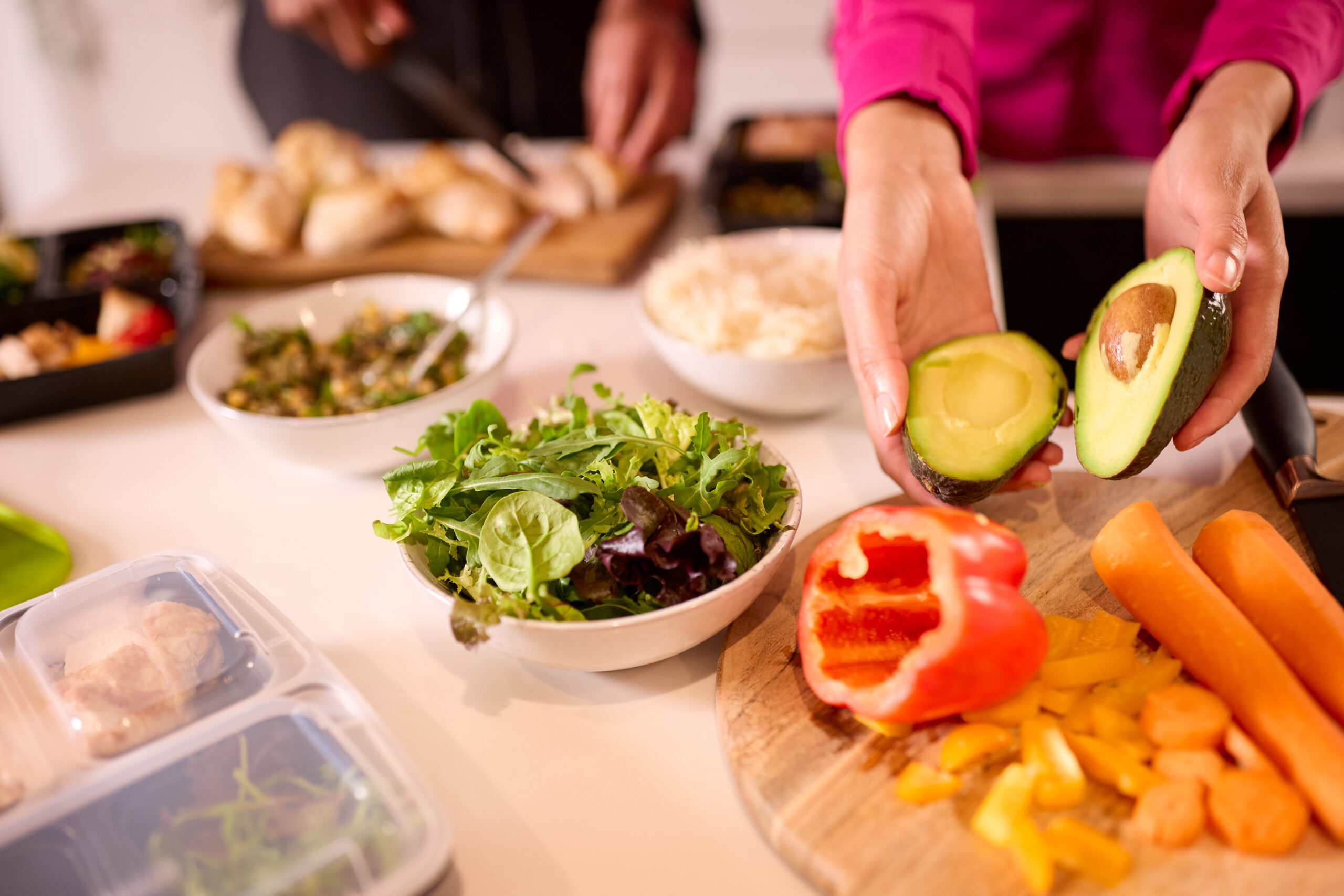Fresh ripe tomatoes, served over a bed of greens. Tender chicken breasts that you can cut with your fork. A refreshing green breakfast smoothie.
These are just some of the appetizing images that come to mind when we think about meal prepping. But what does it really mean? Meal prepping is the process of planning and preparing meals in advance, typically for a week or more. It involves cooking and storing multiple servings of food that can be easily reheated and enjoyed throughout the week. For seniors, this proactive approach can be incredibly valuable when it comes to saving time and making sure nutritious options are always available. Let’s take a closer look at what exactly it entails – and how you can get started.What Does it Mean to “Meal Prep”?
Meal prepping involves planning, preparing, and portioning meals ahead of time, making it easier to stick to a nutritious eating plan without the daily hassle of cooking from scratch. This practice can range from simply chopping vegetables for the week to cooking full meals in advance and storing them in the refrigerator or freezer. For seniors, meal prepping can be especially helpful if you need to manage dietary needs, maintain portion control, and reduce the temptation of unhealthy, convenience foods. It doesn’t take long to prep your meals for the week. Here are a few key benefits:- Improved Nutrition: Meal prepping allows you to have control over the ingredients used in your dishes, which can lead to healthier, more balanced meals.
- Saves Time and Money: By preparing meals in bulk, you save time and reduce the need to cook every day. Additionally, buying ingredients in bulk can be more cost-effective, resulting in savings on groceries.
- Reduced Stress: Knowing that meals are already prepared can significantly reduce the daily stress of deciding what to cook.
Tips for Meal Prepping for Seniors
Here are some simple tips to help you start meal prepping:1. Plan Balanced Meals
Start by planning a week’s worth of meals. Take into consideration any dietary requirements and preferences, and make sure each meal is well-balanced with carbohydrates, protein, and fats.2. Choose Easy-to-Prepare Recipes
Opt for simple recipes that do not require elaborate preparation. Slow cookers and pressure cookers can be great tools to simplify the cooking process.3. Use Proper Storage Containers
Use airtight containers that are easy to open and close, and that can be safely used in the microwave, freezer, and dishwasher.4. Involve Caregivers
If you’re caring for a senior, involve them in the meal prepping process if possible. This can be a great way to spend quality time together and ensure their preferences are considered.5. Prep in Stages
If spending a long time in the kitchen is tiring, break the meal prepping process into stages. For example, you might chop vegetables one day and cook proteins the next.6. Stay Organized
Keep a list of your prepped meals and cross them off as you eat them to keep track of what you have available.Meal Prep Recipes and Ideas
Need some inspiration? Here are some simple ideas to get you started on your meal prep journey:Breakfast
- Oatmeal Jars: Prepare jars of oats with fruit, nuts, and seeds. Add milk or yogurt the night before for a quick, nutritious breakfast.
- Egg Muffins: Mix eggs with vegetables and cheese, pour into muffin tins, and bake. These can be easily reheated for a protein-rich breakfast.
Lunch
- Quinoa Salad: Combine cooked quinoa with vegetables, beans, and a light dressing. Store in individual containers for a ready-to-eat lunch option.
- Chicken Wraps: Prepare wraps with grilled chicken, hummus, and fresh veggies. Wrap tightly in foil and store in the fridge for a quick grab-and-go meal.
Dinner
- Slow Cooker Stew: Use a slow cooker to prepare a hearty stew with lean meat, vegetables, and broth. Portion into containers and freeze for future dinners.
- Baked Fish and Veggies: Season fish filets and place them on a baking sheet with mixed vegetables. Bake and store in portions for a nutritious dinner.
Snacks
- Fruit and Nut Mix: Prepare a mix of dried fruits and nuts for a healthy snack option.
- Veggie Sticks and Hummus: Pre-cut vegetables like carrots, celery, and bell peppers. Store in the fridge with small containers of hummus for dipping.











